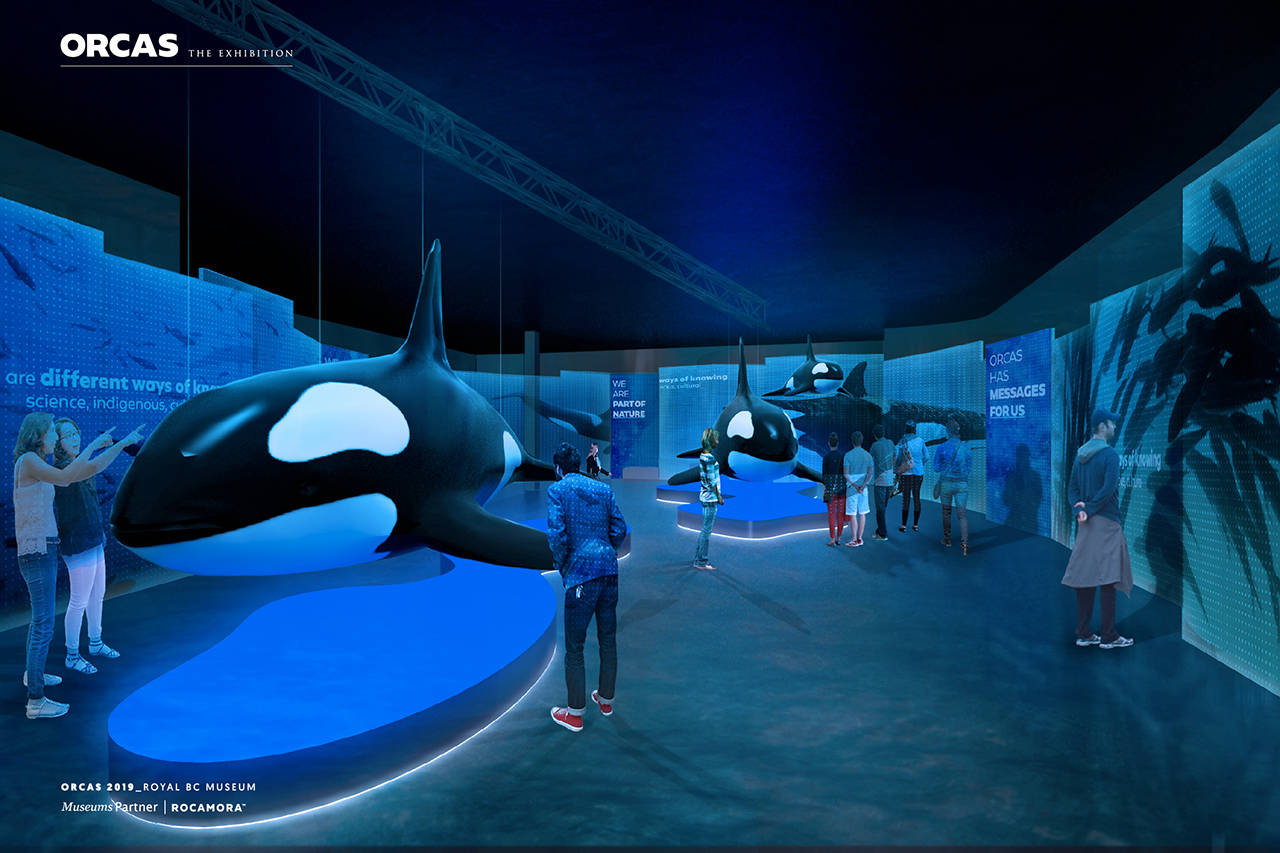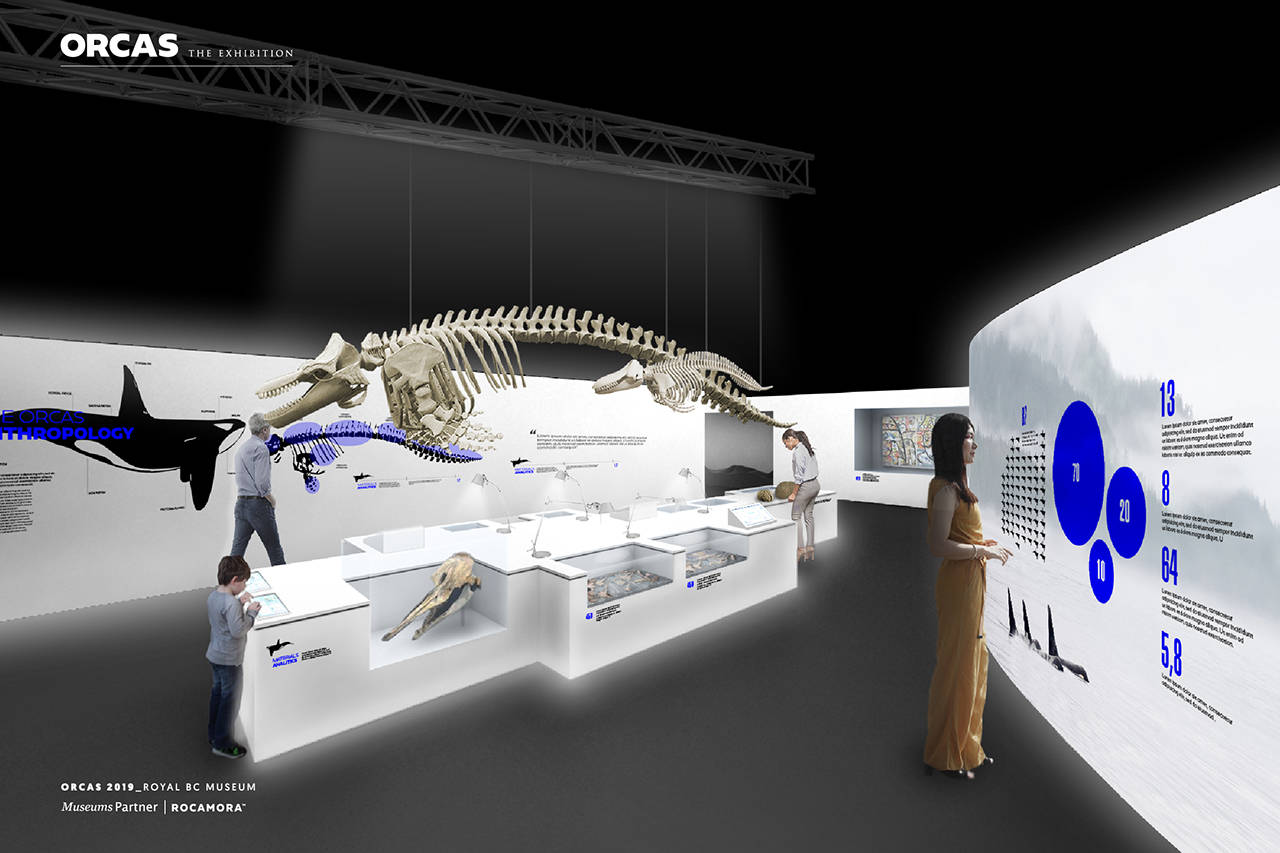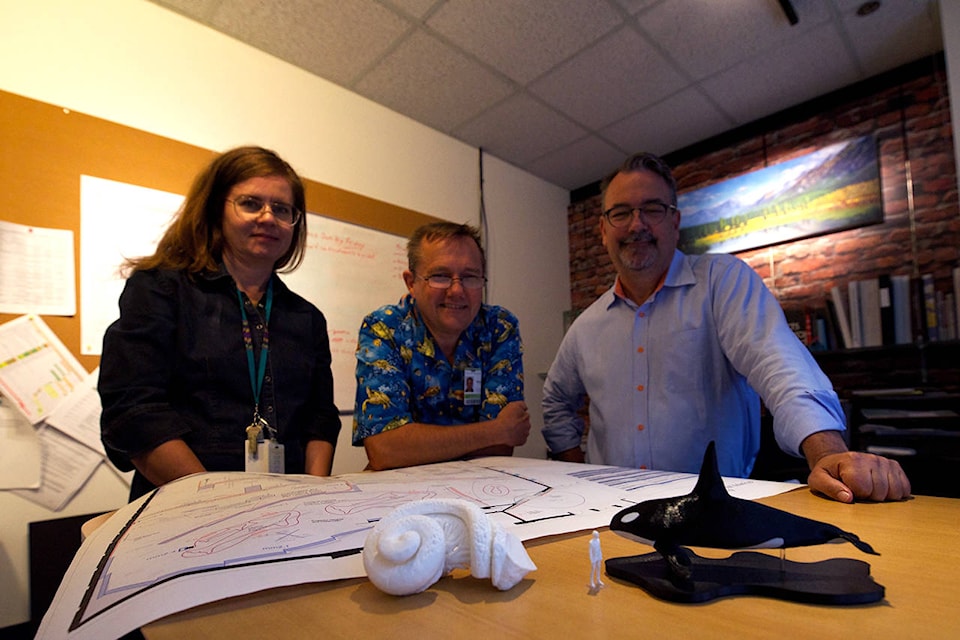In 2014 a southern resident killer whale known as J32, or Rhapsody, was found dead off the shores of Courtenay. What made the juvenile whale’s death even more tragic was the fact that she died of an infection caused by her full-term fetus, still inside her, which had died sometime earlier.
J32 was pulled ashore and her remains collected by scientists, as were those of her calf.
“When they took the meat off the bones … the meat had to be disposed of in the toxic waste section of the landfill because of how contaminated it was,” explained Gavin Hanke, curator of Vertebrate Zoology at the Royal BC Museum (RBCM). “Eighteen years of eating salmon did that for her, so that’s a bit of a flag for us.”
ALSO READ: Three southern resident killer whales declared dead plunging population to 73
J32’s situation – and the situation of the withering southern resident killer whale population, and whales around the world – helped inspire RBCM’s upcoming exhibit, Orcas: A Shared Future.
“We were looking for a B.C. story,” said Michael Barnes, head of exhibitions.
Unlike many recent exhibits, which have been led in large part by museums or universities from across the world, Orcas will be led by the museum itself, with a majority of items coming from Vancouver Island and Vancouver. Almost everything will also be built in-house, with a few aspects contracted out.
One of the key features of the exhibit will be J32’s skeletal remains alongside those of her calf, years after the two were separated for scientific processing.
| Gavin Hanke, curator of vertebrate zoology, holds out the baby teeth from a fetus orca whale. The young southern resident member died before birth, and the mother "Rhapsody" (J32) died with the calf inside her. Both animals will be on display at the Royal BC Museum's upcoming Orcas: Our Shared Future exhibit (Nicole Crescenzi/News Staff) |
“There will be many aspects that pull on the heartstrings like that,” said Leah Best, head of knowledge at the RBCM.
ALSO READ: Southern resident killer whale died of blunt trauma, likely from ship
The exhibit will explore the massive trials experienced by orcas around the world in a three-part display: the first portion will look at the basic biology of orcas, including a collection of fossils to explore their evolutionary development. The second portion will look at the how pop culture, orca captivity, and traditional Indigenous understandings have painted the public perspective of orcas, and the third section will look to “our shared future,” understanding conservation efforts and changes that humanity needs to make for the species, and the planet, to thrive.
The exhibit has been in the works for more than two years and will take up 10,000 square-feet of the museum with more than 18 audio-visual and multimedia features, 11 films, hands-on displays, more than 100 artifacts, as well as three life-sized replica orcas, spanning from 3.5 to nine meters long.
While the show is of local content, it’s already caught international attention from perusing museums.
“This is our most ambitious ever touring exhibition,” Barnes said. “It will be our first foray into the global market as well.”
ALSO READ: Wildlife photography, orca exhibit coming soon to Victoria’s Royal BC Museum
So far the show has received interest from Australia, New Zealand, Europe and in the United States, though no official commitments have been made.
While the exhibit will feature some hard and sad truths, it will also explore the possibilities for conservation and recovery, and look at orca populations that are excelling.
“We don’t want the visitor to exit feeling doom and gloom, because that tends to demotivate people, and we want to motivate them,” Best said. “So we’ve got this idea of ‘love not lost’ which will be embodied in the outro to the exhibition.”
Orcas: A Shared Future will begin running in mid-May 2020, and will run until the end of December 2020.
Send a Tweet: @NicoleCrescenzi
Like us on Facebook


